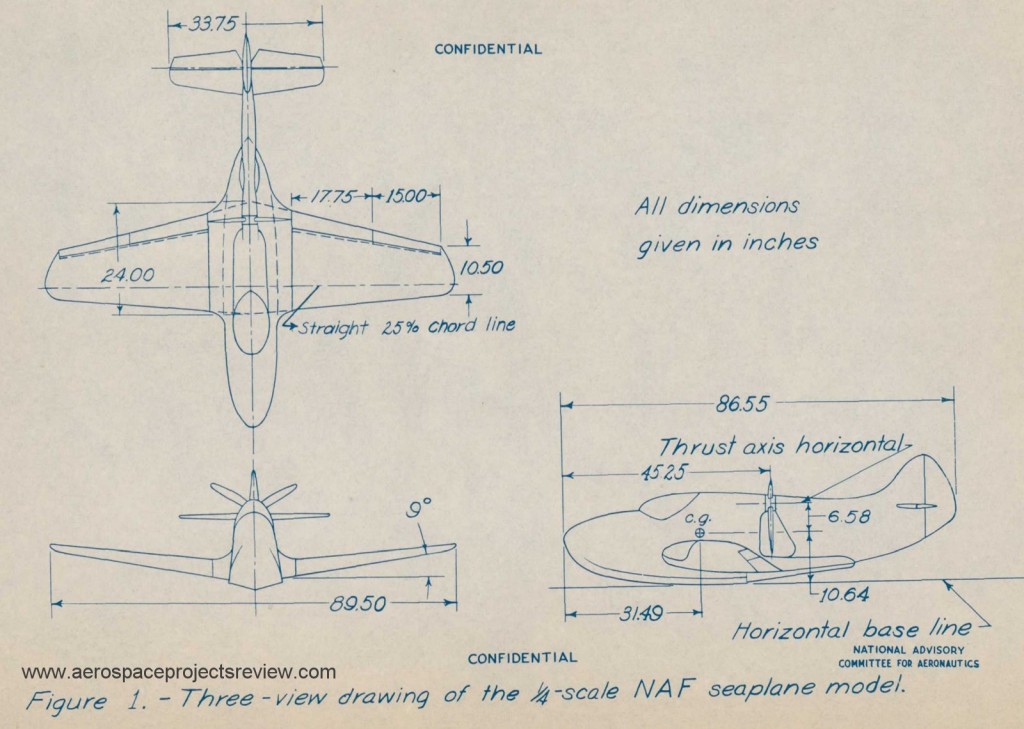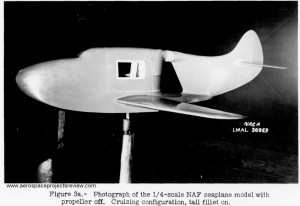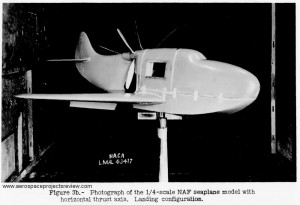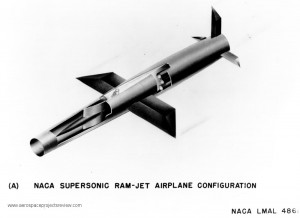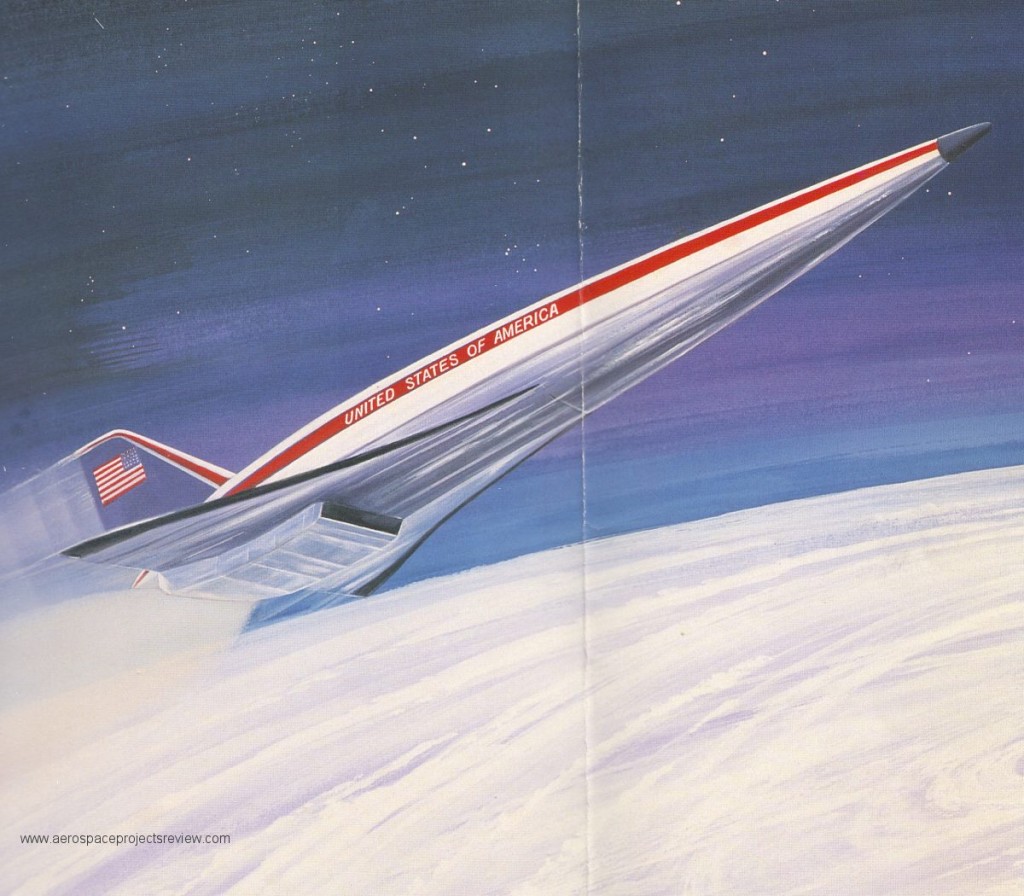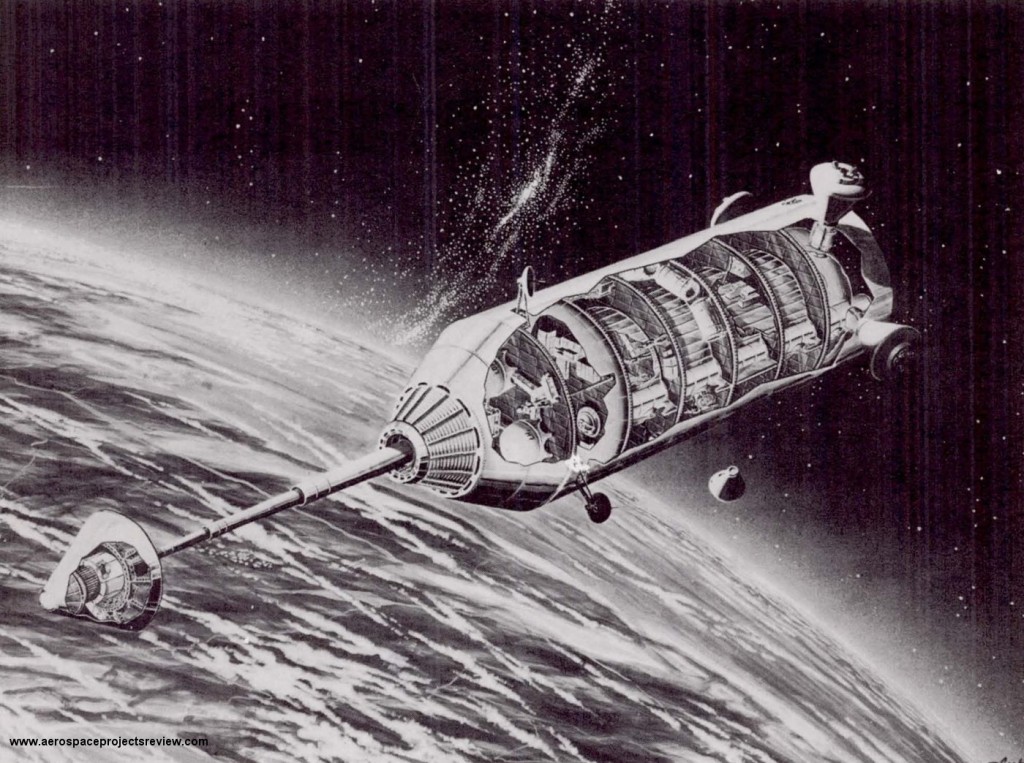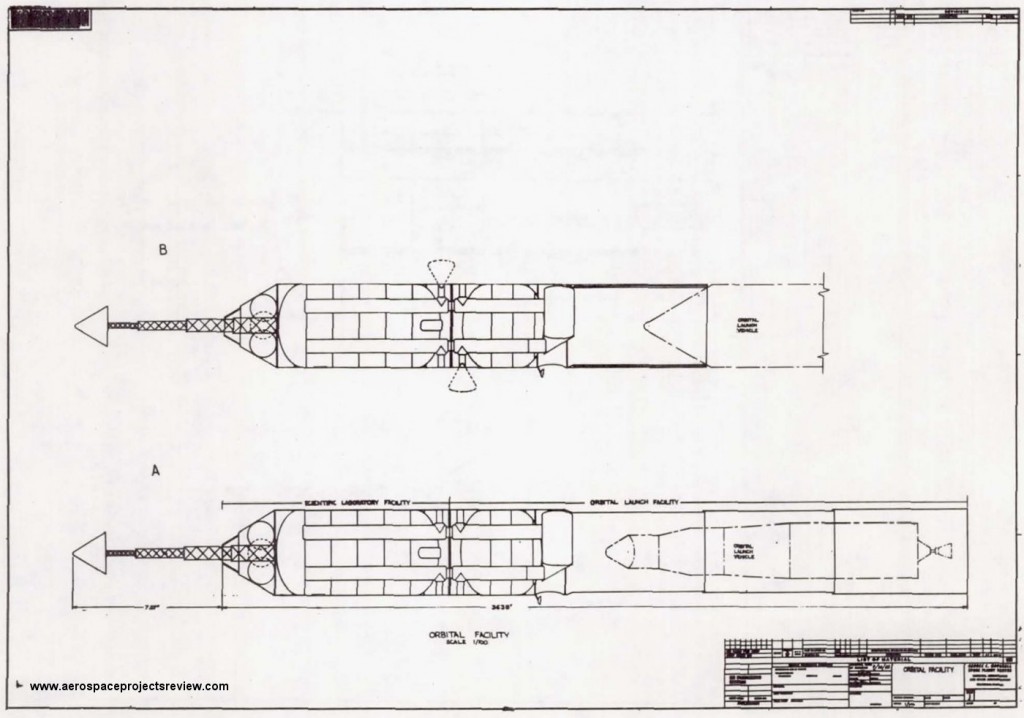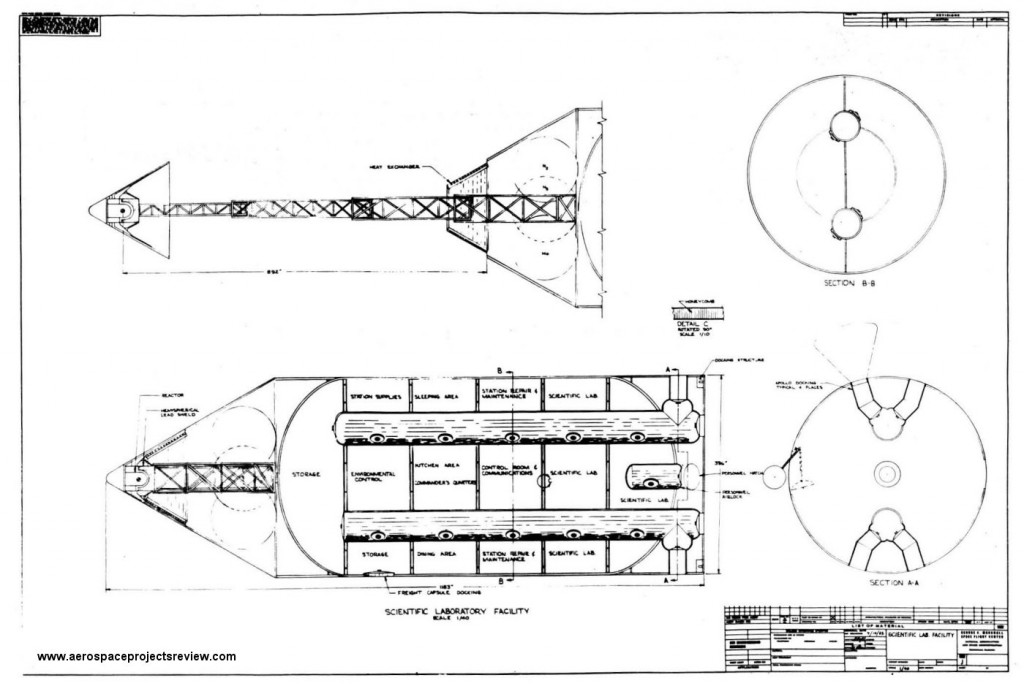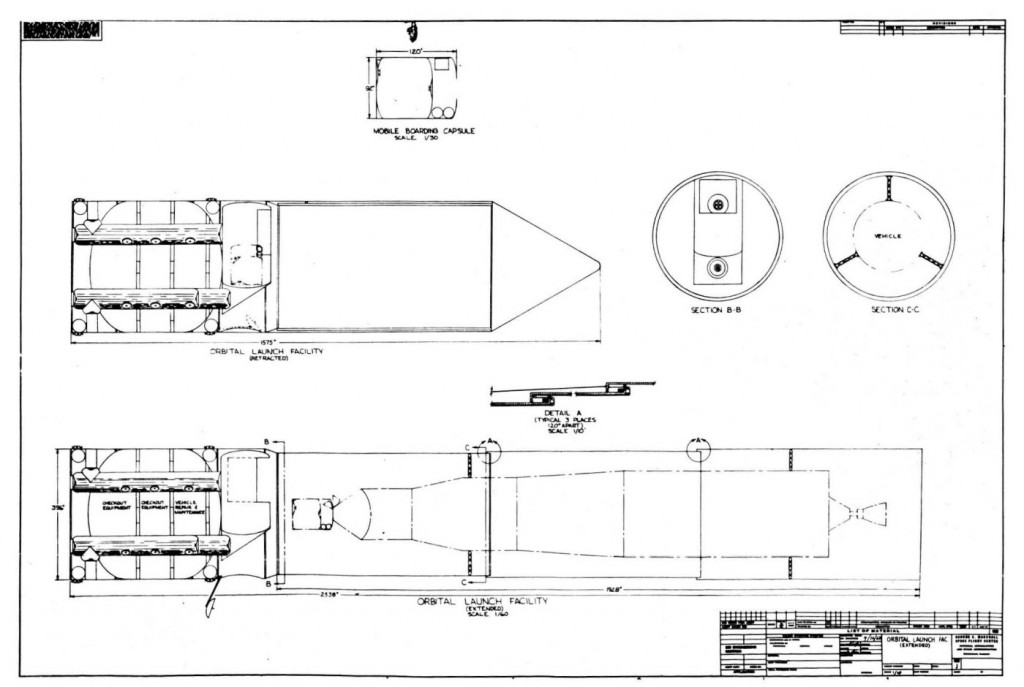Taken from a January 1947 NACA-Langley wind tunnel test report are some images describing the Naval Aircraft Factory “Float wing convoy interceptor.” This was an unconventional single-engine, single-seat fighter plane designed to be catapulted off of a ship (a cargo ship, presumably), land in the water and then be picked up by crane and returned to service. There was no landing gear. The unusual fuselage had substantially more drag than a conventional one, due to the cutout needed for the mid-ship mounted propeller. The model was 1/4 scale. Full-scale information includes:
Engine: one Ranger XV-770-9, max 625 hp
Normal gross weight: 4000 lbs
Fighter overload gross weight: 4319 lbs
Wingspan: 29.83 ft
Wing area: 160 sq. ft
It seemed to be a poor performer. Not only lots of drag, but the rudder had a tendency to shake badly. This was clearly a WWII-era design; by 1947, not only was its design obsolete, so was its role.
